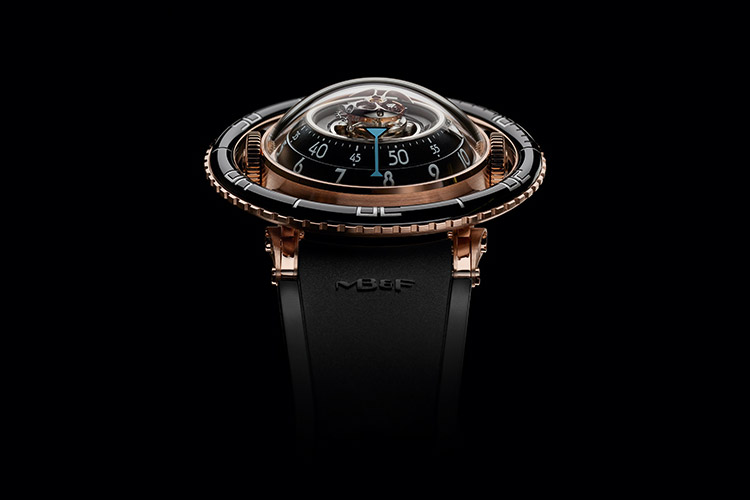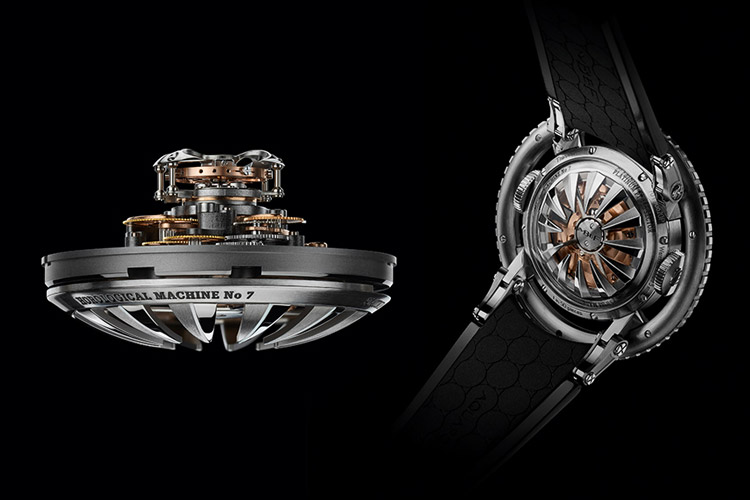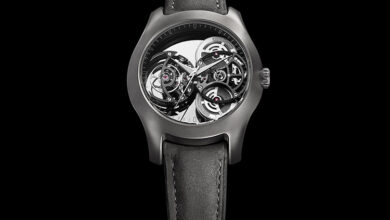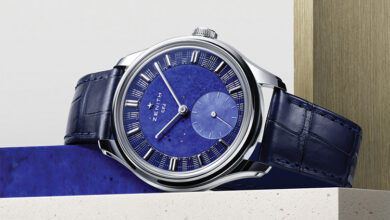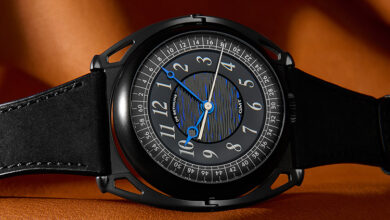MB&F goes green with ‘Aquapod’
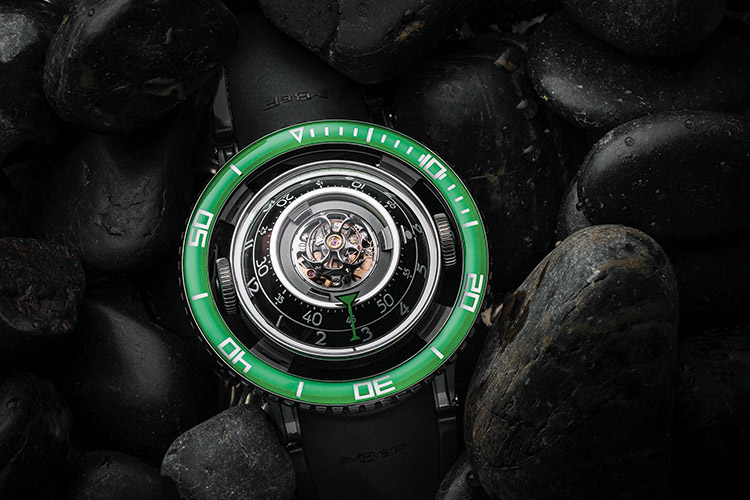
First launched in 2017 – in red gold with black ceramic bezel, and in titanium with blue ceramic bezel – MB&F’s HM7 is now back in a titanium case with a green sapphire crystal bezel, limited to 50 pieces
MB&F has always pushed the boundaries of haute horlogerie into multiple other fields, such as the outer space with HM2, HM3, HM6, the sky with HM4, and the race track with their HM5, HMX, and HM8. In 2017, MB&F dived into the watery depths with their Horological Machine No.7, aka HM7 Aquapod.
Similar to the biological structure of a jelly fish, the HM7 Aquapod features a central flying tourbillon that tops the concentric vertical movement architecture, with indications radiating out from the centre like ripples in a pond. Jellyfish are radially symmetric, Aquapod is radially symmetric. Where a jellyfish generates power from food caught in its tentacles, HM7 generates power from its tentacle-like automatic winding rotor. Where jellyfish have a radially symmetric ring of neurons for a brain, Aquapod has radially symmetric rings displaying hours and minutes. Where jellyfish have a hood or bell on top, HM7 Aquapod has an imposing flying tourbillon regulating the power generated by the rotor, and transforming it into the display of time.
The winding rotor’s tentacles are crafted from a solid block of titanium; their very three-dimensional nature makes machining and finishing extremely challenging. Underneath the tentacles, a platinum mass ensures powerful and efficient winding. And then there’s that bezel. While Horological Machine No.7 is not a dive watch, it is a timepiece comfortably at home in the water – so MB&F added the one element that all serious aquatic watches possess: a unidirectional rotating bezel. However, unlike every other dive watch on the planet, Aquapod’s bezel isn’t attached to the case, but floats apart like a life buoy.
The HM7 Engine was developed in-house by MB&F and houses 303 components and boasts a power reserve of 72 hours. While HM7 Aquapod is as contemporary as could be, the concept of the three-dimensional, spherical movement architecture is centuries old, originating in the “onion” pocket watches popular in the 18th century. From bottom to top, the winding rotor, mainspring barrel, hour and minute indications, and flying tourbillon are all concentrically mounted around the central axis. Energy travels from the rotor at the very bottom of the movement to the flying tourbillon regulator at the very top via gearing acting like a series of stairs, allowing power to transition from one level to the next.
The choice of a flying tourbillon was deliberate as the upper bridge of a normal tourbillon would have necessitated the use of smaller, less legible time-display rings. The continually rotating flying tourbillon regulator at the very top of the movement is positioned for maximum appreciation by day, while three panels of AGT Ultra (Ambient Glow Technology) lume around the inside of the movement illuminate the tourbillon for maximum appreciation by night.
The winding rotor’s tentacles are machined from a solid block of titanium. Their curved, very three-dimensional nature is a manufacturing challenge, both for machining and for finishing, which alternates between polished and satin-finished sections. Hidden underneath the lightweight titanium tentacles, a sector in much heavier platinum ensures that the HM7 Engine is wound efficiently.
And, like many jellyfish, HM7 glows in the dark. It glows where you would expect it to – on the hour and minute numerals – but also around the inside of the movement, to light up that flying tourbillon at night… and in addition, along the tentacle-like winding rotor so that its operation, too, can be appreciated in the dark.
HM7 Aquapod is available in 3 limited editions: titanium with blue ceramic bezel limited to 33 pieces, red gold with black ceramic bezel limited to 66 pieces, and titanium with green sapphire crystal bezel limited to 50 pieces.
